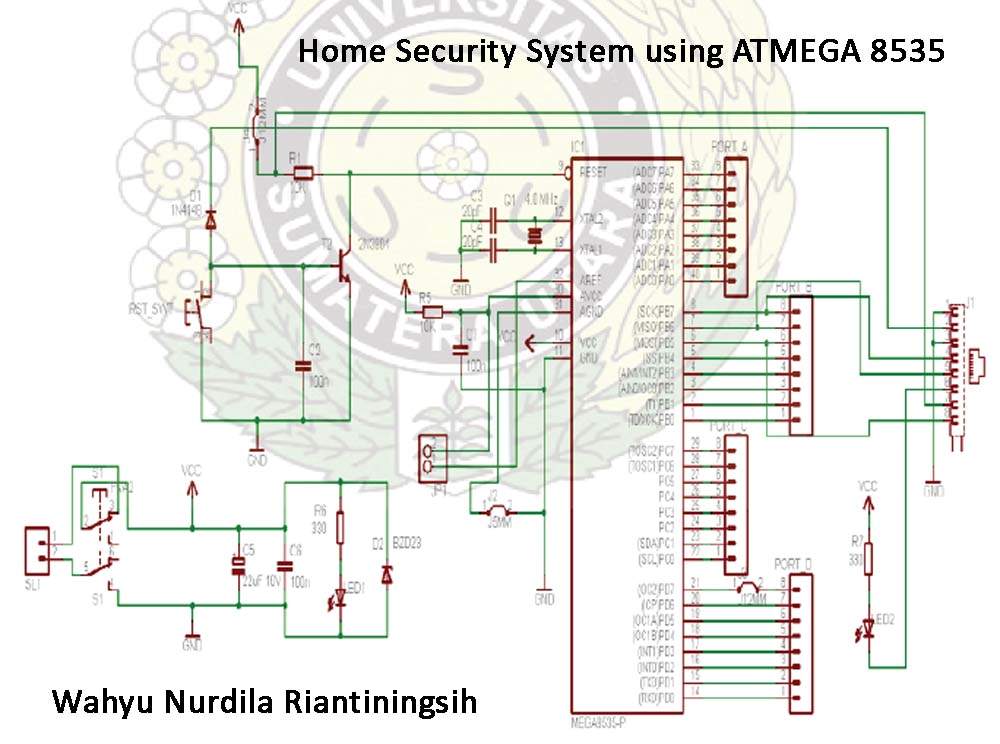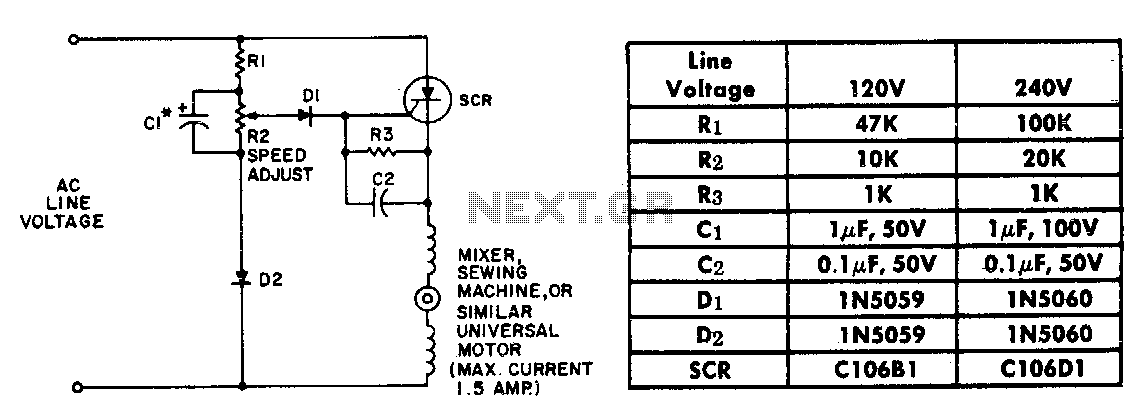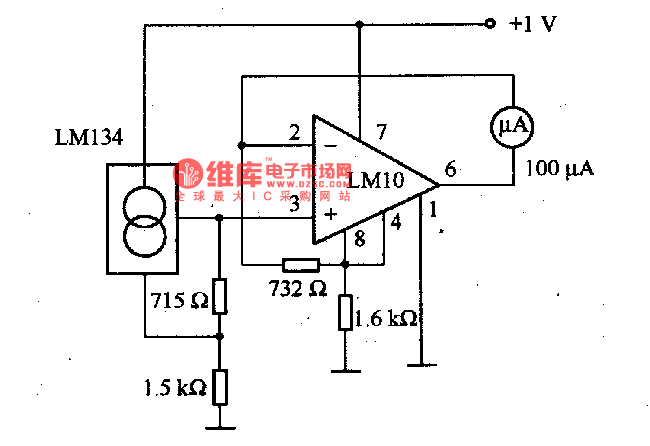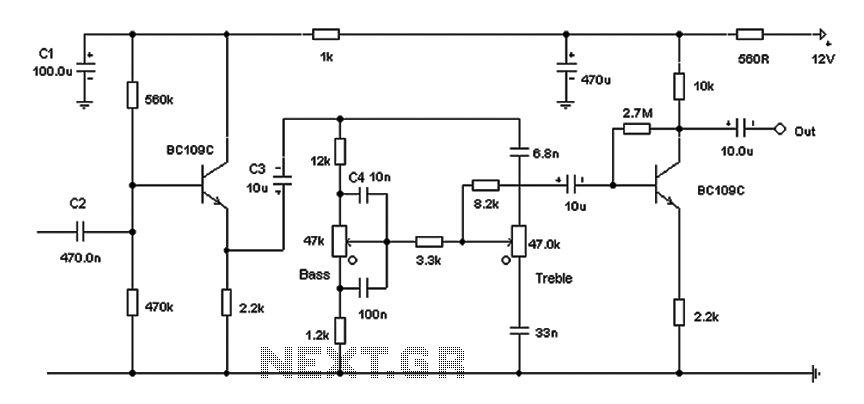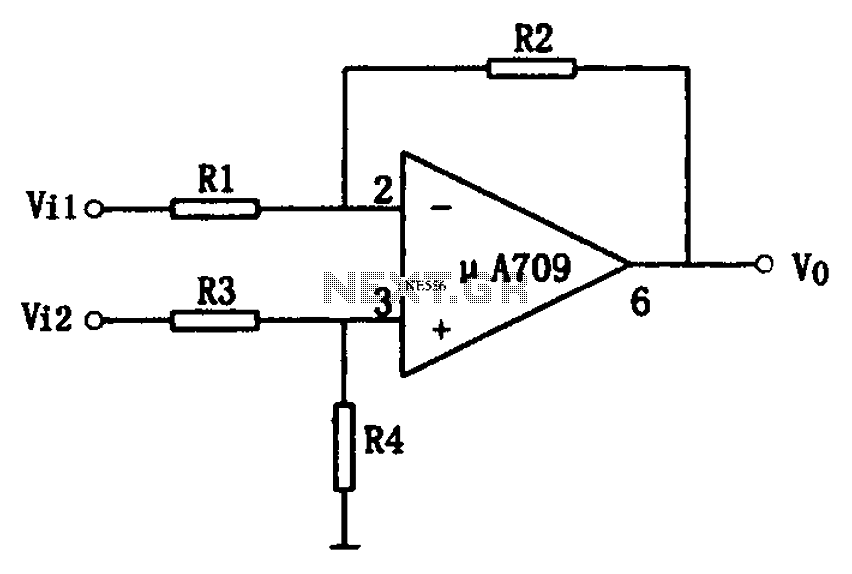
Motor Bike Headlight Controller Circuit
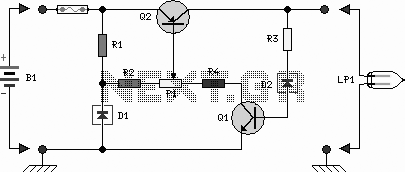
Motor Bike Headlight Controller Circuit. This circuit automatically turns a motorcycle's headlight on and off, independently of both the light and ignition switches, provided the battery is fully charged. The first stage...
The motorcycle headlight controller circuit is designed to enhance safety and convenience by ensuring that the headlight operates automatically based on the conditions of the motorcycle's battery charge. This system functions independently of the traditional light and ignition switches, allowing for automatic operation when the motorcycle is in use.
The circuit typically begins with a voltage sensing mechanism that monitors the battery's charge level. When the battery voltage exceeds a predetermined threshold, the controller activates the headlight. Conversely, if the battery voltage drops below this threshold, the circuit will automatically turn off the headlight to conserve battery power. This feature is particularly beneficial in preventing battery drain when the motorcycle is not in use.
The main components of the circuit include a microcontroller or comparator circuit, a relay for switching the headlight on and off, and a voltage divider to monitor the battery voltage. The microcontroller can be programmed to adjust the sensitivity of the voltage detection, allowing customization based on the specific battery type and motorcycle model.
In addition to the basic functionality, the circuit may also incorporate features such as a delay mechanism that prevents the headlight from turning off immediately when the motorcycle is turned off, allowing for a graceful shutdown. Furthermore, the inclusion of an LED indicator can provide visual feedback regarding the operational status of the headlight controller.
Overall, the motorcycle headlight controller circuit serves as an effective solution for enhancing the reliability and safety of motorcycle lighting systems by automating headlight operation based on battery conditions.Motor Bike Headlight Controller Circuit Circuit This circuit automatically turns a motor cycle`s headlight on and off, independently of both the light and ignition switches, provided the battery is fully charged. The first stage.. 🔗 External reference
The motorcycle headlight controller circuit is designed to enhance safety and convenience by ensuring that the headlight operates automatically based on the conditions of the motorcycle's battery charge. This system functions independently of the traditional light and ignition switches, allowing for automatic operation when the motorcycle is in use.
The circuit typically begins with a voltage sensing mechanism that monitors the battery's charge level. When the battery voltage exceeds a predetermined threshold, the controller activates the headlight. Conversely, if the battery voltage drops below this threshold, the circuit will automatically turn off the headlight to conserve battery power. This feature is particularly beneficial in preventing battery drain when the motorcycle is not in use.
The main components of the circuit include a microcontroller or comparator circuit, a relay for switching the headlight on and off, and a voltage divider to monitor the battery voltage. The microcontroller can be programmed to adjust the sensitivity of the voltage detection, allowing customization based on the specific battery type and motorcycle model.
In addition to the basic functionality, the circuit may also incorporate features such as a delay mechanism that prevents the headlight from turning off immediately when the motorcycle is turned off, allowing for a graceful shutdown. Furthermore, the inclusion of an LED indicator can provide visual feedback regarding the operational status of the headlight controller.
Overall, the motorcycle headlight controller circuit serves as an effective solution for enhancing the reliability and safety of motorcycle lighting systems by automating headlight operation based on battery conditions.Motor Bike Headlight Controller Circuit Circuit This circuit automatically turns a motor cycle`s headlight on and off, independently of both the light and ignition switches, provided the battery is fully charged. The first stage.. 🔗 External reference
